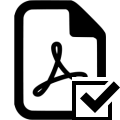Document and General Guidelines
If you haven't already done so, take the Digital Content Accessibility Training. Links with an asterisk* go to modules or pages from the public copy of the training content in the Canvas Community supplemental materials.
Guidelines for Specific Software and Systems
The links below take you to relevant sections from the public copy of the Digital Content Accessibility Training in the Canvas Community supplemental materials.
Guidelines for Meetings
Guidelines for Web Developers
If you haven't already done so, take the Web Accessibility Training. The guidelines below serve to supplement the training content.



